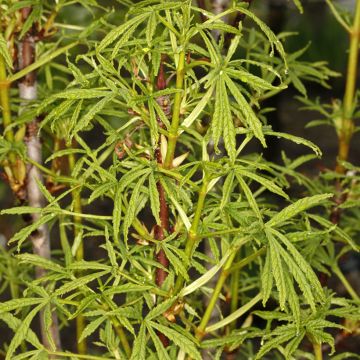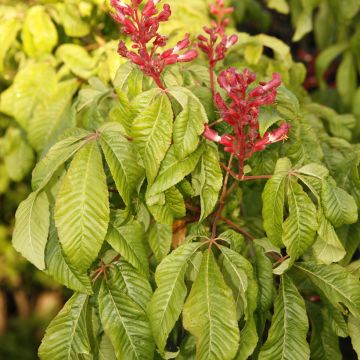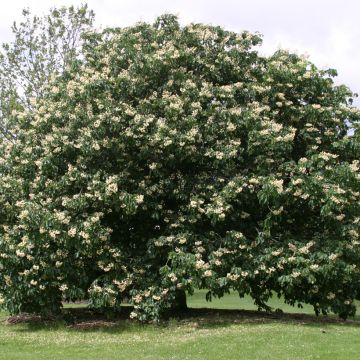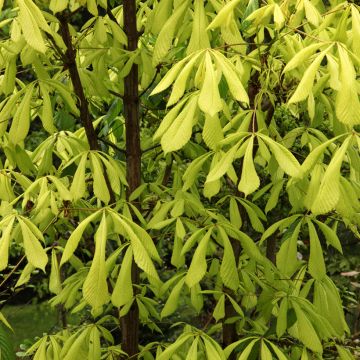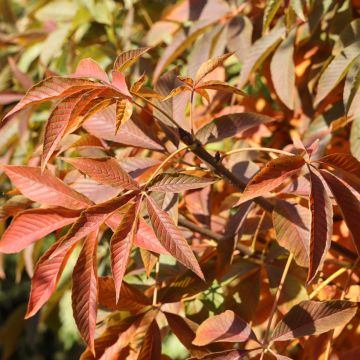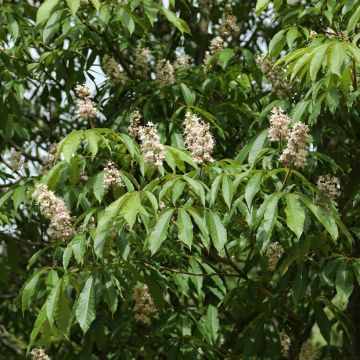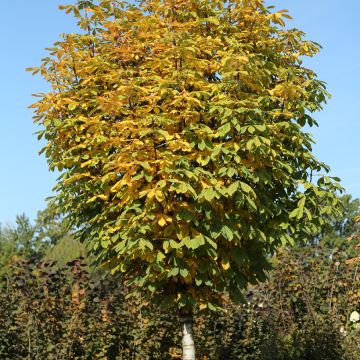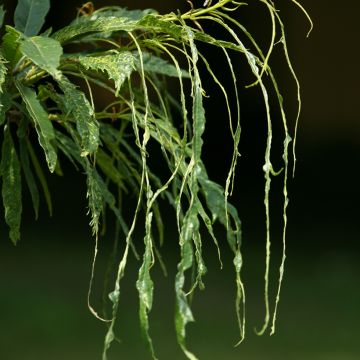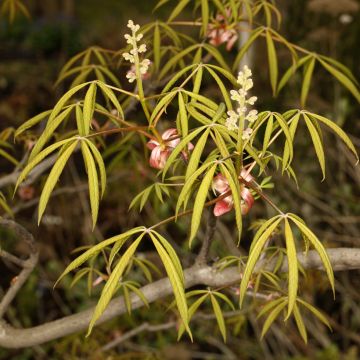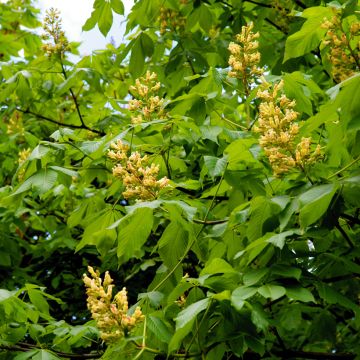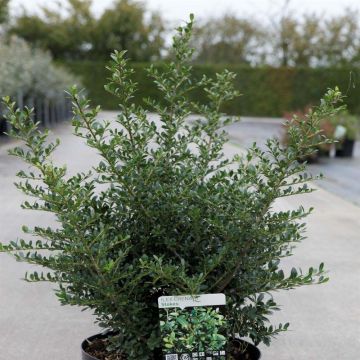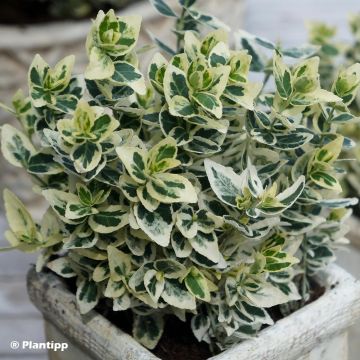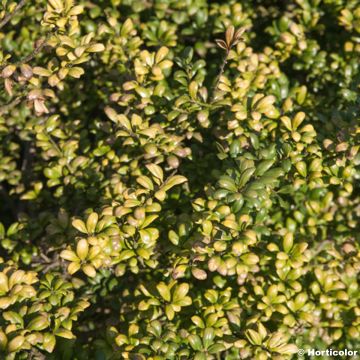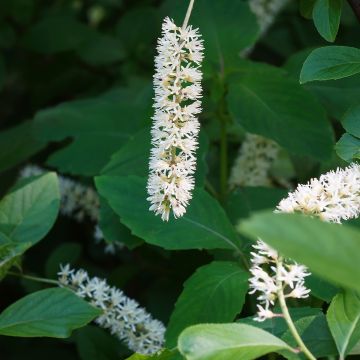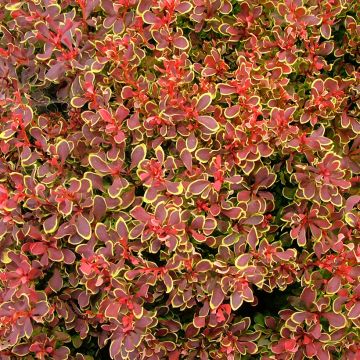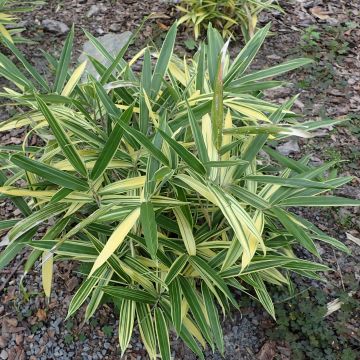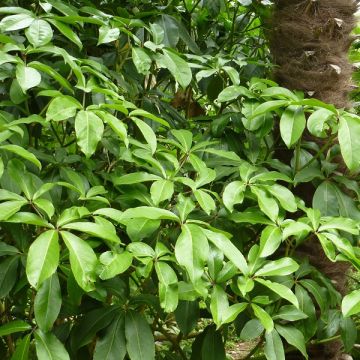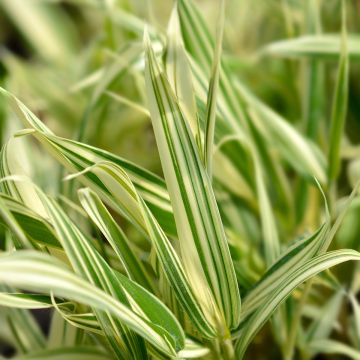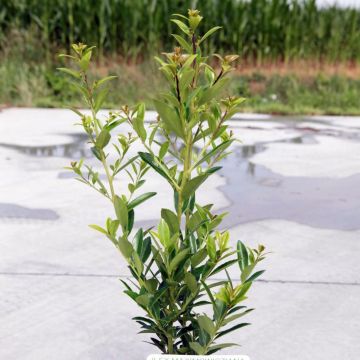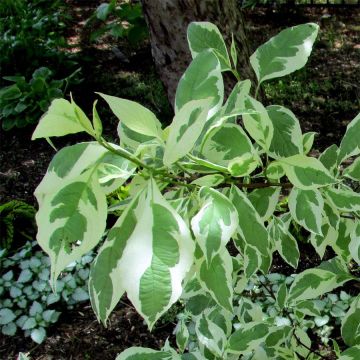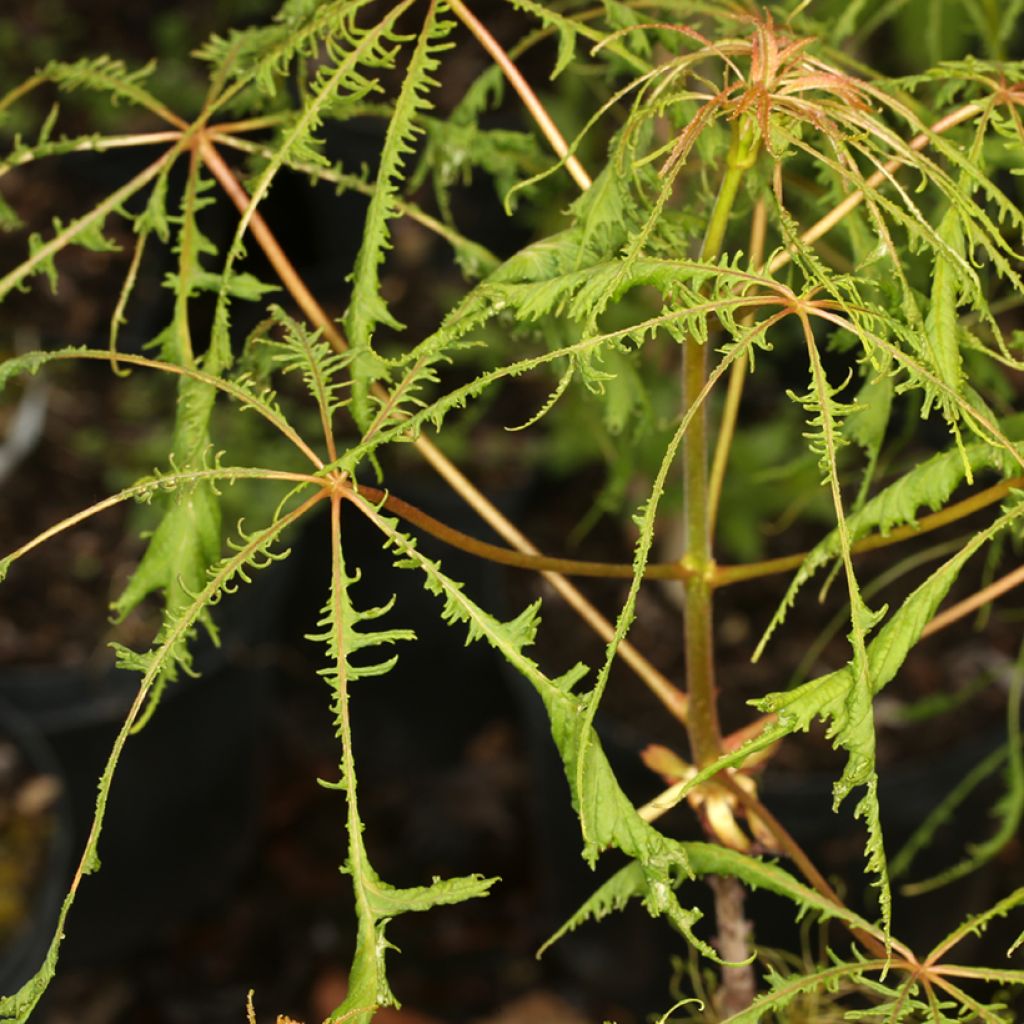

Aesculus Laciniata
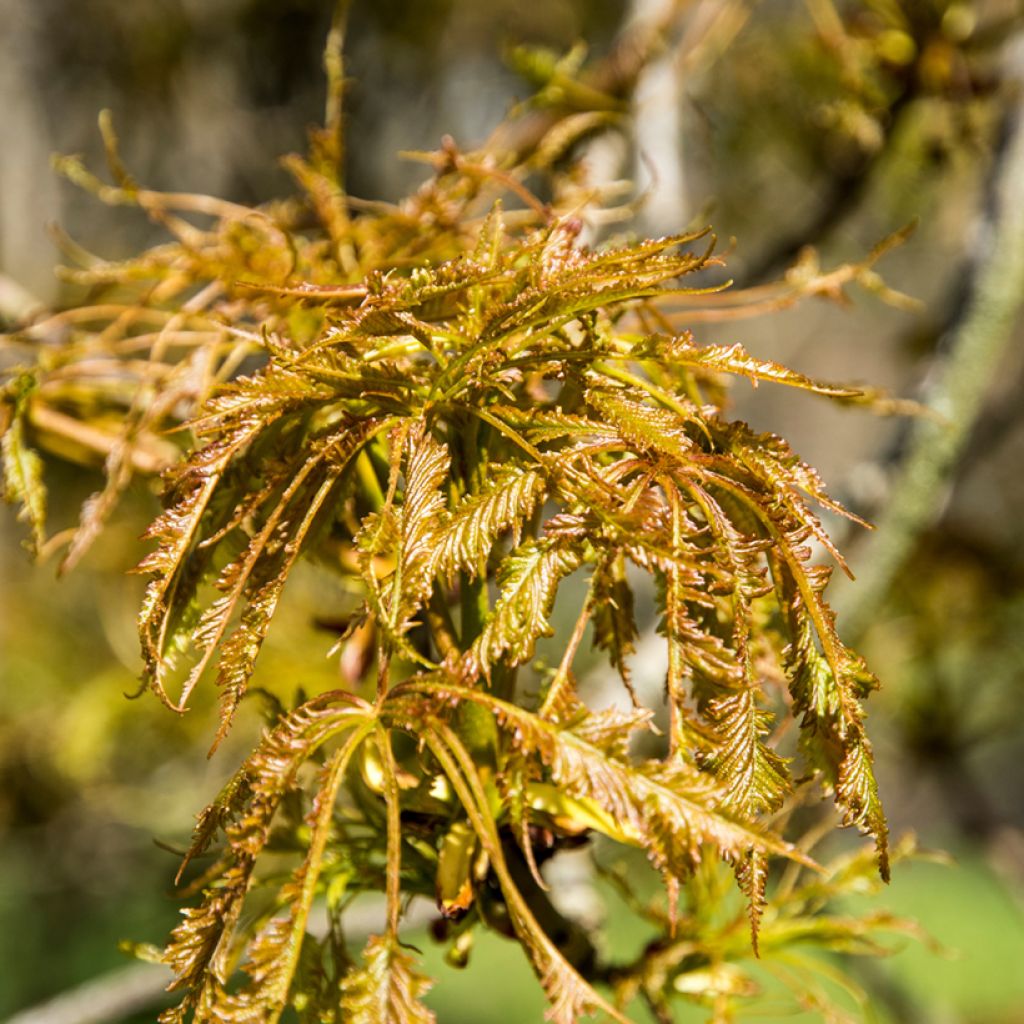

Aesculus Laciniata
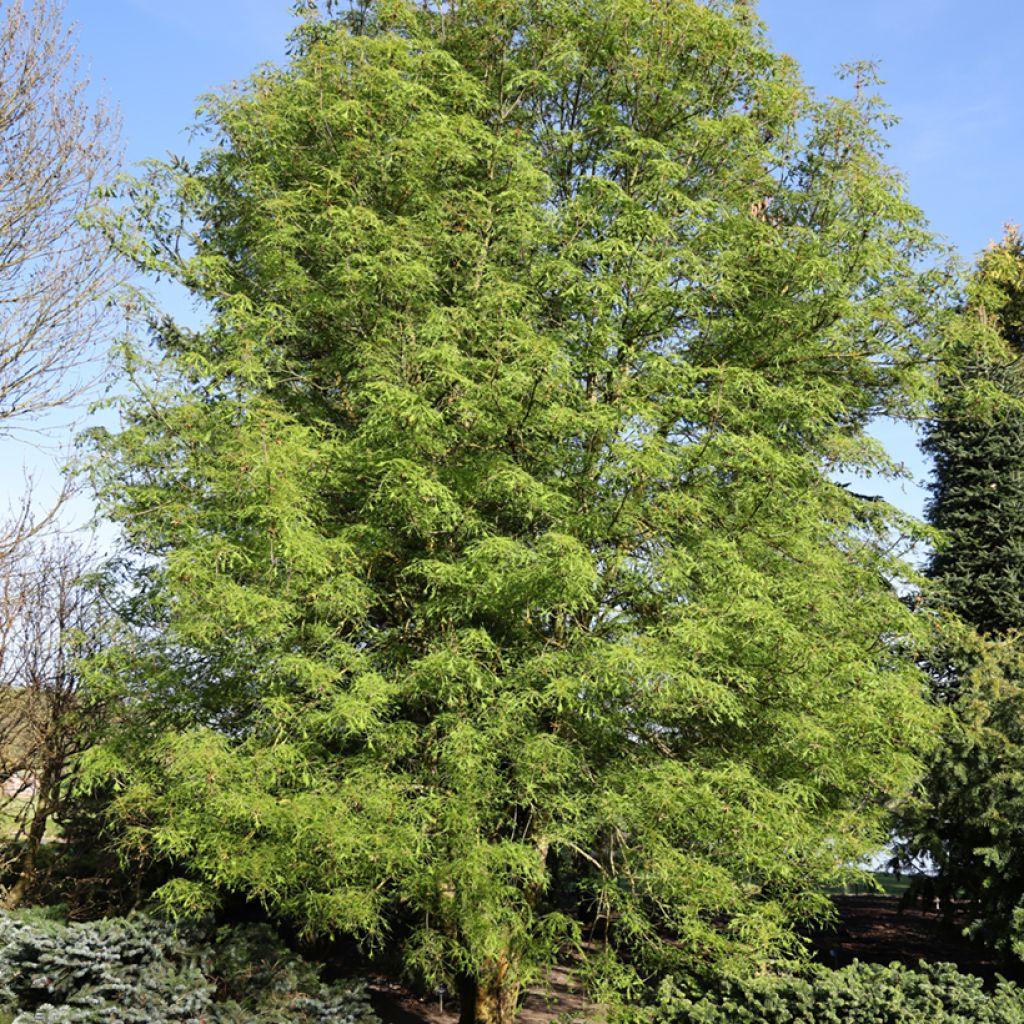

Aesculus Laciniata
Aesculus Laciniata
Aesculus hippocastanum Laciniata
This item cannot be shipped to the selected country
Delivery charge from €5.90
More information
Schedule delivery date,
and select date in basket
This plant carries a 24 months recovery warranty
More information
We guarantee the quality of our plants for a full growing cycle, and will replace at our expense any plant that fails to recover under normal climatic and planting conditions.
From €5.90 for pickup delivery and €6.90 for home delivery
Express home delivery from €8.90.
Does this plant fit my garden?
Set up your Plantfit profile →
Description
The Aesculus hippocastanum 'Laciniata' is a medium-sized Horse Chestnut tree with a rather narrow habit, featuring finely cut foliage, known as laciniate. All these characteristics make it a particularly elegant small tree. In this cultivar, the flowering is of little interest and there is no fruiting. Planted as a specimen tree, it will amaze your visitors. Its size and slow growth make it suitable for medium-sized gardens.
The Aesculus hippocastanum 'Lacinita' was discovered in France in 1843, by A. & L. Leroy, in Angers. This tree belongs to the Sapindaceae family, formerly known as the Hippocastanaceae family. The common species, the Horse Chestnut, is native to Macedonia, a region that includes northern Greece, Albania, and southern Bulgaria. It is a forest species. In nature, the common Horse Chestnut can reach a height of 25 m with a spread of 15 to 20 m.
The 'Laciniata' Horse Chestnut develops a trunk and its branches are covered with a thin, brown to reddish bark, initially smooth, becoming grey and fissured with age. Its habit is rather narrow and upright. A 10-year-old specimen will not exceed 3.50 m in height. Eventually, after many years, the tree reaches a height of about 9 or 10 m and spreads out to 4 to 5 m. The crown is somewhat irregular and open. The deciduous foliage emerges in spring and falls in autumn. In winter, large reddish buds covered with shiny resin can be seen on the branches. The foliage consists of leaves divided into 5 to 8 very narrow leaflets, sometimes thread-like, with toothed edges, and light green in color. The discreet flowering takes place in May-June, on branches that are already leafed out. It takes the form of small upright pyramid-shaped clusters called thyrses, composed of a few small flowers about 1 cm wide, with a colour close to white. This cultivar is sterile and does not produce fruits.
The 'Laciniata' Horse Chestnut stands out when planted as a specimen tree or in a tropical-inspired flower bed, with ferns at its base, for example. It can also be planted in a large container on the terrace, where it can live for a few years before being planted in the ground. Plant collectors will also appreciate other slightly unusual trees: the Juniperus communis 'Horstmann' juniper, the Corylus avellana 'Contorta' hazelnut and its purple version Corylus avellana 'Red Majestic', the Salix erythroflexuosa willow, and the Robinia pseudoacacia 'Twisty Baby' black locust.
Report an error about the product description
Aesculus Laciniata in pictures
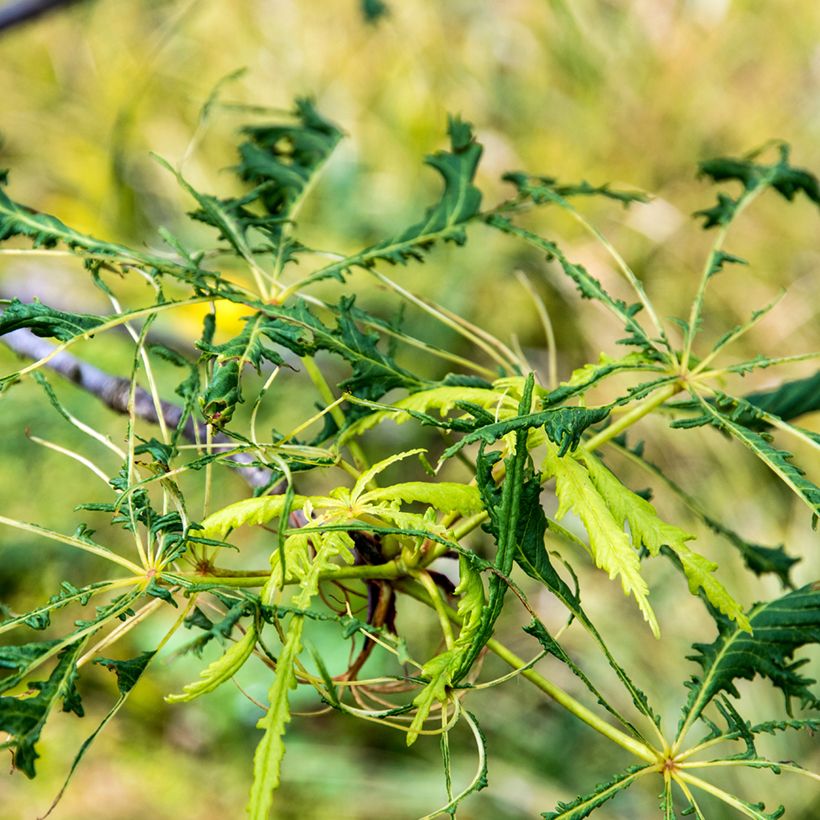



Plant habit
Flowering
Foliage
Botanical data
Aesculus
hippocastanum
Laciniata
Sapindaceae
Aesculus Laciniata
Cultivar or hybrid
Other Aesculus - Horse Chestnut
Planting and care
The 'Laciniata' Horse Chestnut should be planted in spring or autumn in a regular but deep soil, preferably quite rich, slightly acidic, neutral or very slightly chalky. Place it in a sunny or semi-shaded location, in a well-cleared spot where it can be seen. Water and mulch to keep the soil cool for young plants. Once well rooted, it will rely on rainwater. To limit attacks from pests (rarely fatal), collect the leaves in autumn and remove them. Trapping male butterflies using a sexual pheromone (funnel traps) helps to reduce attacks.
Planting period
Intended location
Care
This item has not been reviewed yet - be the first to leave a review about it.
Striking foliage shrubs
Haven't found what you were looking for?
Hardiness is the lowest winter temperature a plant can endure without suffering serious damage or even dying. However, hardiness is affected by location (a sheltered area, such as a patio), protection (winter cover) and soil type (hardiness is improved by well-drained soil).

Photo Sharing Terms & Conditions
In order to encourage gardeners to interact and share their experiences, Promesse de fleurs offers various media enabling content to be uploaded onto its Site - in particular via the ‘Photo sharing’ module.
The User agrees to refrain from:
- Posting any content that is illegal, prejudicial, insulting, racist, inciteful to hatred, revisionist, contrary to public decency, that infringes on privacy or on the privacy rights of third parties, in particular the publicity rights of persons and goods, intellectual property rights, or the right to privacy.
- Submitting content on behalf of a third party;
- Impersonate the identity of a third party and/or publish any personal information about a third party;
In general, the User undertakes to refrain from any unethical behaviour.
All Content (in particular text, comments, files, images, photos, videos, creative works, etc.), which may be subject to property or intellectual property rights, image or other private rights, shall remain the property of the User, subject to the limited rights granted by the terms of the licence granted by Promesse de fleurs as stated below. Users are at liberty to publish or not to publish such Content on the Site, notably via the ‘Photo Sharing’ facility, and accept that this Content shall be made public and freely accessible, notably on the Internet.
Users further acknowledge, undertake to have ,and guarantee that they hold all necessary rights and permissions to publish such material on the Site, in particular with regard to the legislation in force pertaining to any privacy, property, intellectual property, image, or contractual rights, or rights of any other nature. By publishing such Content on the Site, Users acknowledge accepting full liability as publishers of the Content within the meaning of the law, and grant Promesse de fleurs, free of charge, an inclusive, worldwide licence for the said Content for the entire duration of its publication, including all reproduction, representation, up/downloading, displaying, performing, transmission, and storage rights.
Users also grant permission for their name to be linked to the Content and accept that this link may not always be made available.
By engaging in posting material, Users consent to their Content becoming automatically accessible on the Internet, in particular on other sites and/or blogs and/or web pages of the Promesse de fleurs site, including in particular social pages and the Promesse de fleurs catalogue.
Users may secure the removal of entrusted content free of charge by issuing a simple request via our contact form.
The flowering period indicated on our website applies to countries and regions located in USDA zone 8 (France, the United Kingdom, Ireland, the Netherlands, etc.)
It will vary according to where you live:
- In zones 9 to 10 (Italy, Spain, Greece, etc.), flowering will occur about 2 to 4 weeks earlier.
- In zones 6 to 7 (Germany, Poland, Slovenia, and lower mountainous regions), flowering will be delayed by 2 to 3 weeks.
- In zone 5 (Central Europe, Scandinavia), blooming will be delayed by 3 to 5 weeks.
In temperate climates, pruning of spring-flowering shrubs (forsythia, spireas, etc.) should be done just after flowering.
Pruning of summer-flowering shrubs (Indian Lilac, Perovskia, etc.) can be done in winter or spring.
In cold regions as well as with frost-sensitive plants, avoid pruning too early when severe frosts may still occur.
The planting period indicated on our website applies to countries and regions located in USDA zone 8 (France, United Kingdom, Ireland, Netherlands).
It will vary according to where you live:
- In Mediterranean zones (Marseille, Madrid, Milan, etc.), autumn and winter are the best planting periods.
- In continental zones (Strasbourg, Munich, Vienna, etc.), delay planting by 2 to 3 weeks in spring and bring it forward by 2 to 4 weeks in autumn.
- In mountainous regions (the Alps, Pyrenees, Carpathians, etc.), it is best to plant in late spring (May-June) or late summer (August-September).
The harvesting period indicated on our website applies to countries and regions in USDA zone 8 (France, England, Ireland, the Netherlands).
In colder areas (Scandinavia, Poland, Austria...) fruit and vegetable harvests are likely to be delayed by 3-4 weeks.
In warmer areas (Italy, Spain, Greece, etc.), harvesting will probably take place earlier, depending on weather conditions.
The sowing periods indicated on our website apply to countries and regions within USDA Zone 8 (France, UK, Ireland, Netherlands).
In colder areas (Scandinavia, Poland, Austria...), delay any outdoor sowing by 3-4 weeks, or sow under glass.
In warmer climes (Italy, Spain, Greece, etc.), bring outdoor sowing forward by a few weeks.

































